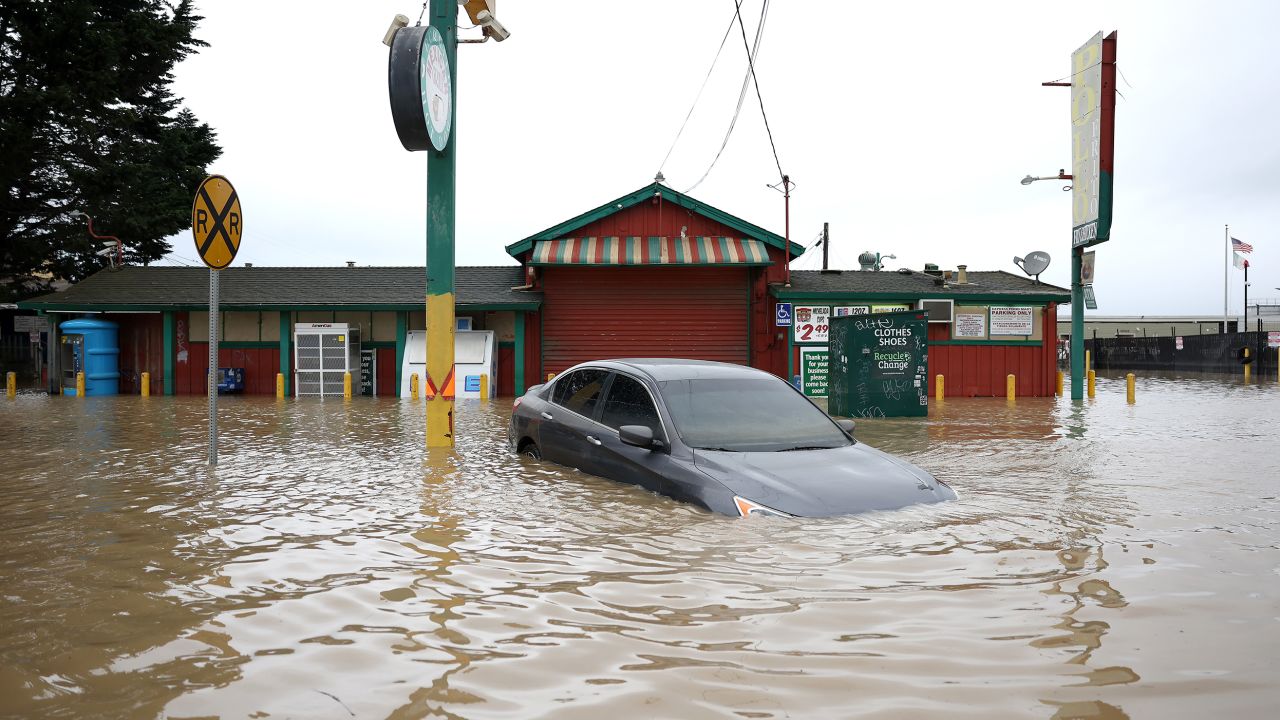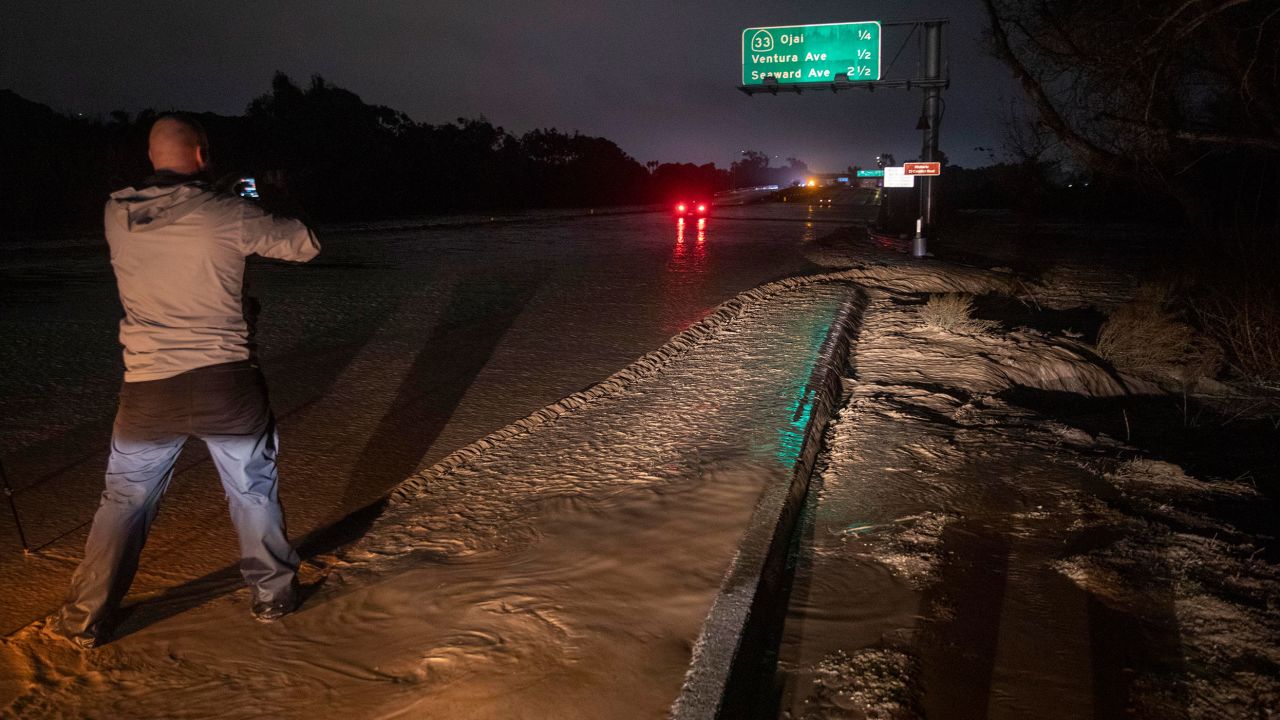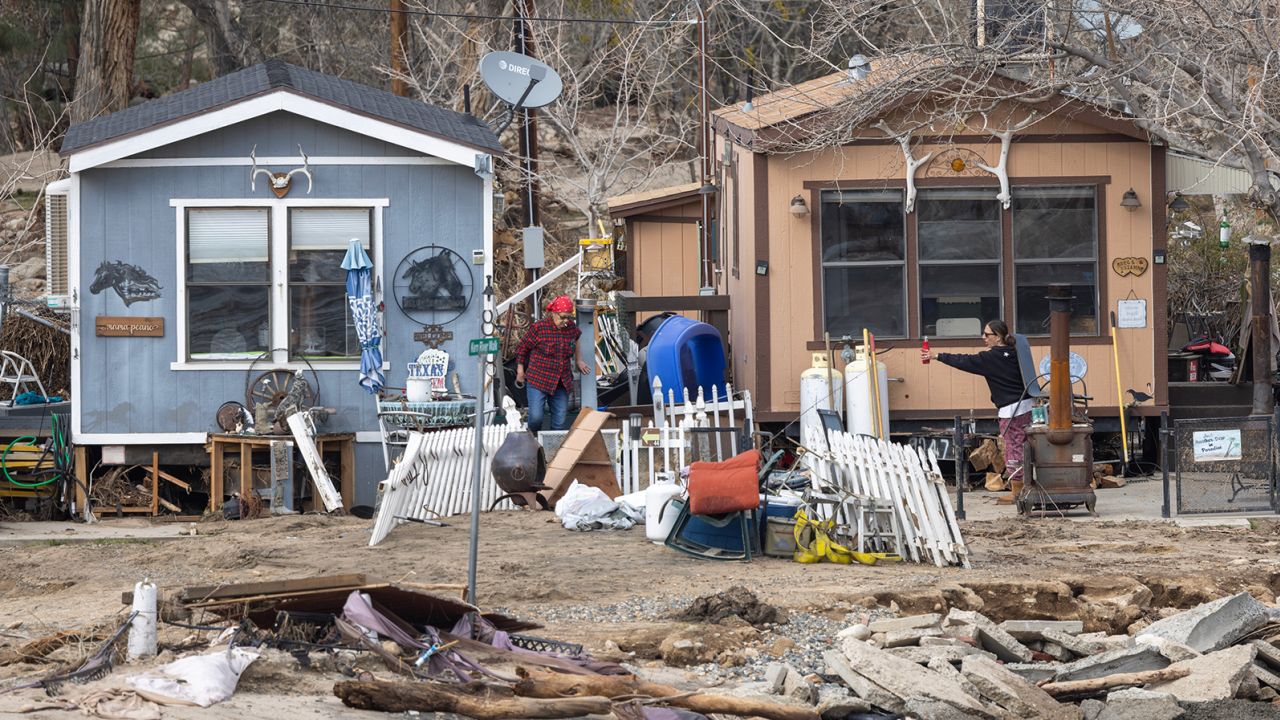CNN
—
Brightly colored toys buried in mud. Brown murky water where cars once parked. Family photos floating through a neighborhood.
This is what one Southern California community looked like last week, lifelong Ventura resident Angie Thompson said, after the state’s 11th atmospheric river this winter wrought hurricane-like winds and catastrophic flooding.
“We’re tired,” Monterey County Sheriff Tina Nieto said of a similar mess and clean-up effort hundreds of miles to the north as she joined Gov. Gavin Newsom and other local leaders to tour damage, including the breached Pajaro River levee.
“Everyone is tired.”
Yet again, though, the vast state is bracing for the wet blast of another atmospheric river – a long, narrow moisture band that carries saturated air thousands of miles, then discharges it like a fire hose. It’s due to impact the US West from Monday to Wednesday, with widespread rain across central and Southern California and more snow in the Sierra Nevada.
While the series of storm systems – a regular part of California weather that may be supercharged this year by key climate patterns – is putting a dent in the state’s historic drought, it’s also lashed many of its residents to a carousel of misery with at least one more ride in store.
“We have neighbors that have lost their entire home,” Thompson said. “One person in particular lost everything, and every time they’d get it under control, something else would happen, and the water would reroute and come back right through the family’s home.”
The fatigue reaches far beyond those forced to muck out their living rooms. Evacuees fret over when they might be able to return. First responders ponder more triple-shift days – sometimes with their own relatives in need of rescue. And for some who’ve survived California’s other recent woes – from wildfires to mudslides to the Covid-19 pandemic – it’s another battle in the war with worry.
“Anxiety wants something that no one can have, which is 100% certainty about things,” said Andrea Kulberg, a licensed clinical psychologist who works with Southern California clients highly anxious about disaster.
People, she said, “want answers that no one can give them.”
Thompson’s driveway has been a lake since an atmospheric river in January pushed a creek into the Camp Chaffee neighborhood where she’s lived for four years, she told CNN. Flooding swept away a whole box of wedding albums, baby photos, clothing, appliances and tools likely passed down through generations.
Compared to some neighbors, Thompson’s damage was minimal, she said. But no one remains untouched.
“Cars, yards … It’s affected every single person over here,” she said. “It’s just really horrible to watch people’s lives just wash down the river.”
A four-hours’ drive north, more than 2,000 people were evacuated – and more then 200 rescued – this month in Pajaro. Ruth Ruiz left in hurry before dawn March 11 and couldn’t immediately return, she told CNN affiliate KPIX. She worried about her property – and how long it might take to get back to normal life.
“We don’t really have a plan. We’re just taking it day by day,” Ruiz said. “But we have a feeling it’s going to be months before even insurance can cover any damages.”
Von Berlanga, meanwhile, stayed in Pajaro and watched last week as water started seeping into his garage, he told CNN. His mom’s home had flooded back in January 1995, when an intense winter storm slammed Monterey County with 6 inches of rain, damaging over 100 homes. Three months later, a second winter storm hit already-saturated areas, causing much more damage.

As the latest of this year’s atmospheric rivers pushed toward shore, Berlanga stayed put with supplies, even as the furnace still showed markings from the 1995 flood, he told CNN.
“I was prepared,” he said. “I had 30 gallons of water, food for me, food for my dogs.”
Then as floodwater started seeping into his garage, Berlanga raised his vintage cars out of harm’s way.
“I jacked up my cars real quick. … They’re OK,” he said as he used a wide hoe to push muddy water around the driveway. “I woke up about 4 o’clock this morning and started cleaning.”

During January’s storms, Ventura County Fire Department Capt. Brian McGrath and his team also rushed into action – completing about 80 rescues in one day, he told CNN. Such calls weren’t nearly as frequent last week, he said, crediting residents with being more prepared.
As another atmospheric river revs up, McGrath and his team are, as always, on call, ready to go within 45 seconds – in some cases for 48 hours or more straight – he said.
But being a firefighter in one’s own community can be draining.
“We try to treat everyone around the community as members of our families or friends because a lot of times they are,” McGrath said. “We will make a rescue or end up finding out that it was one of our coworkers friends or family members.”
“That also runs a toll on us because we’re missing so much of our own family.”
McGrath is grateful for support from his colleagues and relatives, he told CNN. Without it, going from a long fire season straight into a long winter storm season would be completely draining.
The state’s varied existential risks – on top of the waning pandemic – also weighs on ordinary Californians.
As clinical director of Anxiety Experts in Southern California, Kulberg treats clients with anxiety stemming from the state’s deadly wildfires, mudslides and now its devastating floods, she told CNN. Some lost their homes or were rescued from their roofs.
People “want to know: How long am I going to be distressed for? When’s it going to end? How bad is it gonna get?” she said. “No human can have that.”
Through a treatment known as exposure therapy, Kulberg works with clients to confront their own stories repeatedly “to habituate to their fear thoughts and memories and visualizations surrounding the story.”
“Then, they no longer are fearful of having their thoughts and memories and body sensations of anxiety surrounding those events,” she said.

For those dealing with higher levels of anxiety during these times, Kulberg offers these recommendations:
• Remember anxiety cannot harm you; it comes in spikes and it will eventually subside.
• Remember thoughts are not threats; thoughts that something terrible might happen as a result of extreme weather don’t mean it is more likely to happen, and most of what we think never comes true.
• Regardless of what body sensations or thoughts of anxiety might be present, try to continue to do things that bring meaning and purpose to life.